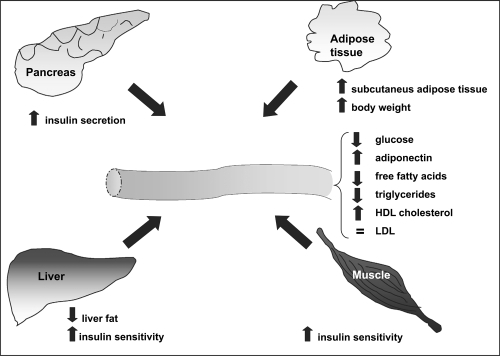Figures & data
Figure 1 Molecular mechanisms of Thiazolidinediones. In transactivations, perozisome-proliferator-activated receptor γ (PPARγ) is a nuclear receptor that acts as a transcription factor upon activation. Thiazolidinediones can active PPARγ. On ligand binding, the PPAR forms a heterodimer with the retinoid X receptor (RXR) and they bind to specific peroxisome proliferators response elements (PPRE) on a number of key target genes involved in the carbohydrate and lipid metabolism. In transespression PPARs can repress gene trascription of other pathways, such as nuclear factor −kB (NF-kB).

